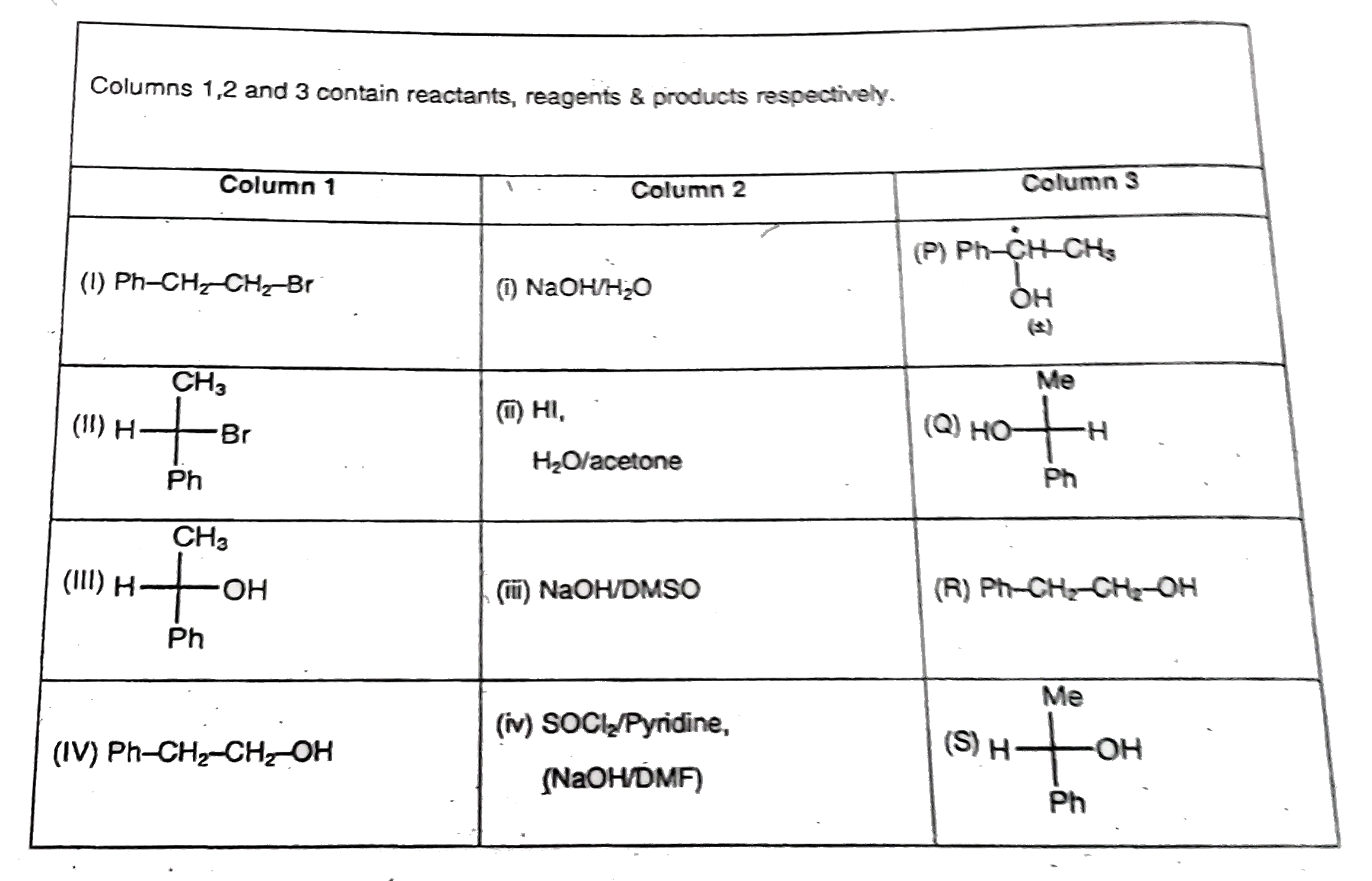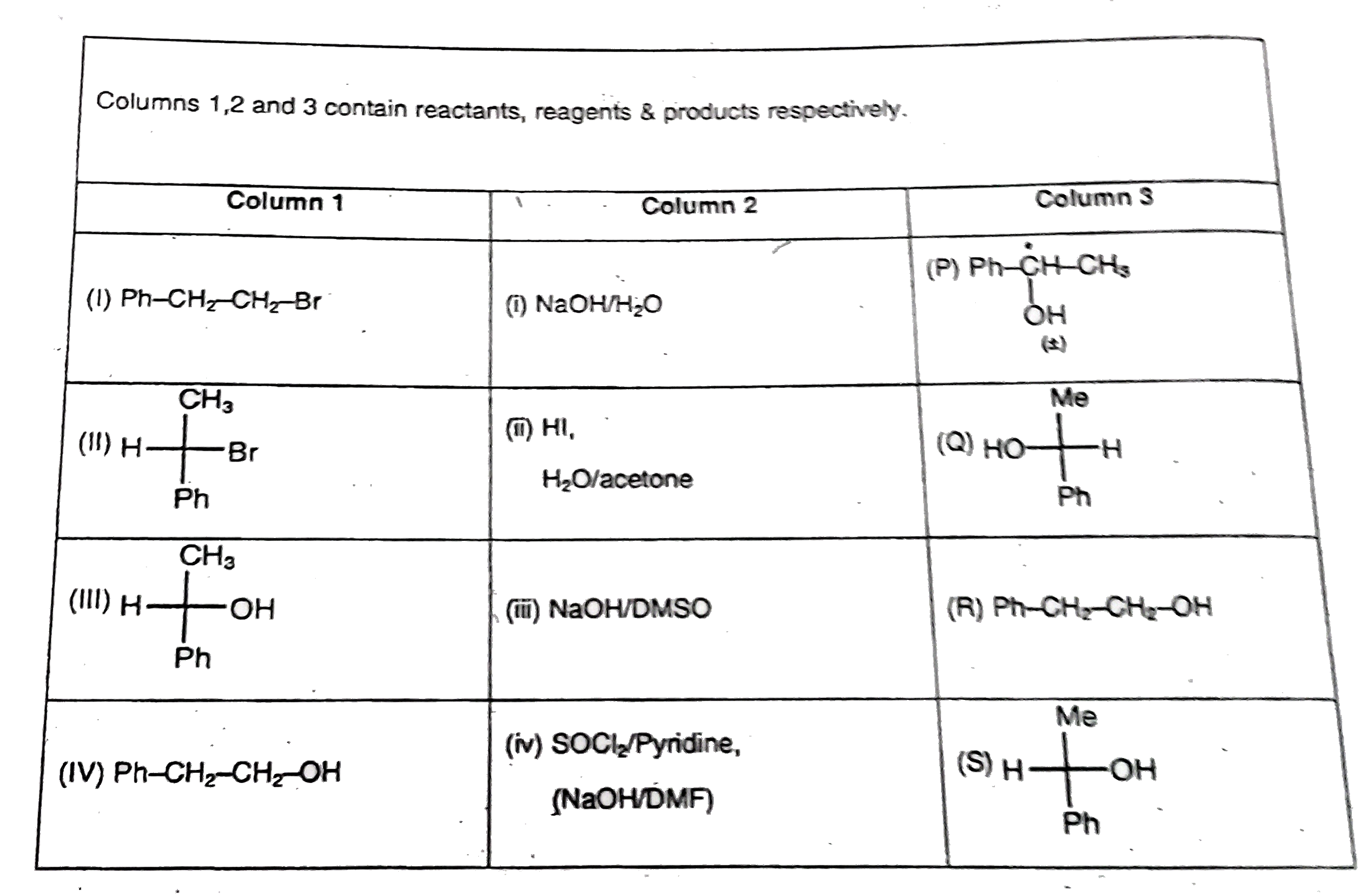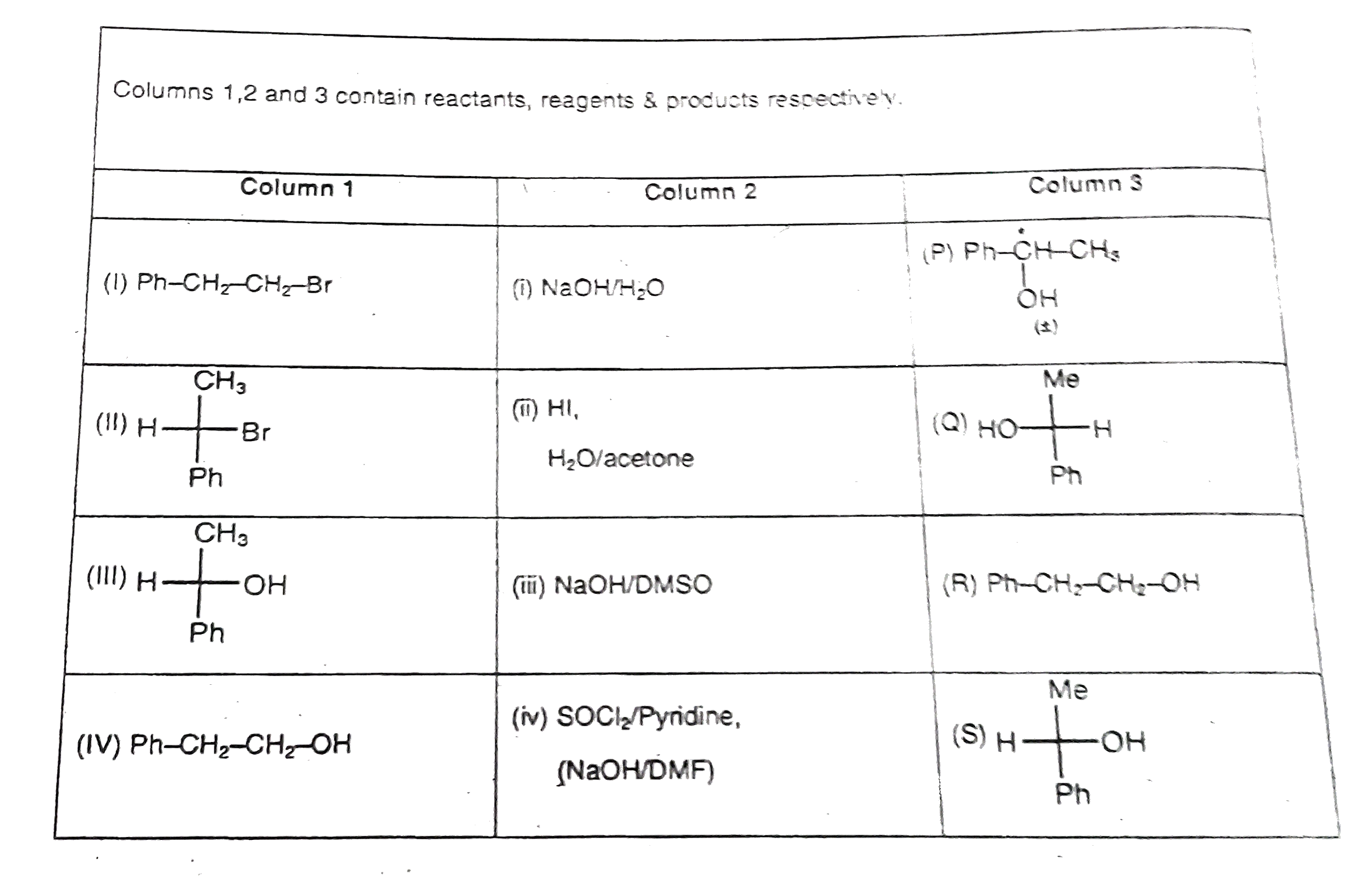The number of steps involved in S1N and S2N mechanisms are given by the set -
1,2
3,1
2,1
2,2
The correct Answer is:C
To determine the number of steps involved in the SN1 and SN2 mechanisms, we can analyze each mechanism step by step.
Step 1: Understanding SN1 Mechanism
- Definition: SN1 stands for Unimolecular Nucleophilic Substitution.
- Steps Involved:
1. Carbocation Formation: The first step involves the departure of the leaving group (e.g., Cl in CH3Cl), resulting in the formation of a carbocation (CH3+).
2. Nucleophile Attack: In the second step, the nucleophile (OH-) attacks the carbocation, leading to the formation of the final product (CH3OH).
Thus, the SN1 mechanism involves 2 steps.
Step 2: Understanding SN2 Mechanism
- Definition: SN2 stands for Bimolecular Nucleophilic Substitution.
- Steps Involved:
1. Single Step Mechanism: In this mechanism, the nucleophile attacks the substrate from the backside of the leaving group, leading to a simultaneous bond formation and bond breaking. This results in the formation of a transition state where both the nucleophile and the leaving group are partially bonded to the carbon atom.
Thus, the SN2 mechanism involves 1 step.
Conclusion
- The number of steps involved in SN1 is 2 steps.
- The number of steps involved in SN2 is 1 step.
Final Answer
The number of steps involved in SN1 and SN2 mechanisms are given by the set: {2, 1}.
---
- Definition: SN1 stands for Unimolecular Nucleophilic Substitution.
- Steps Involved:
1. Carbocation Formation: The first step involves the departure of the leaving group (e.g., Cl in CH3Cl), resulting in the formation of a carbocation (CH3+).
2. Nucleophile Attack: In the second step, the nucleophile (OH-) attacks the carbocation, leading to the formation of the final product (CH3OH).
Thus, the SN1 mechanism involves 2 steps.
- Definition: SN2 stands for Bimolecular Nucleophilic Substitution.
- Steps Involved:
1. Single Step Mechanism: In this mechanism, the nucleophile attacks the substrate from the backside of the leaving group, leading to a simultaneous bond formation and bond breaking. This results in the formation of a transition state where both the nucleophile and the leaving group are partially bonded to the carbon atom.
Thus, the SN2 mechanism involves 1 step.
- The number of steps involved in SN1 is 2 steps.
- The number of steps involved in SN2 is 1 step.
The number of steps involved in SN1 and SN2 mechanisms are given by the set: {2, 1}.
Topper's Solved these Questions
- ALKYI HALIDEBOOK - MOTIONCHAPTER - ALKYI HALIDEEXERCISE - Exercise - 1 (Chemical Properties & Preparation methods of Diahlides)
3 Videos
- ALKYI HALIDEBOOK - MOTIONCHAPTER - ALKYI HALIDEEXERCISE - Exercise - 1 (Chemica l Properties & Preparation methods of Chloroform)
12 Videos
- ALKYI HALIDEBOOK - MOTIONCHAPTER - ALKYI HALIDEEXERCISE - Exercise - 1
7 Videos
- ALCOHOLS & ETHERSBOOK - MOTIONCHAPTER - ALCOHOLS & ETHERSEXERCISE - EXERCISE -4 (LEVEL -II) PREVIOUS YEAR JEE ADVANCED
9 Videos
- AROMATIC COMPOUNDBOOK - MOTIONCHAPTER - AROMATIC COMPOUNDEXERCISE - Exercise - 4 | Level-II
16 Videos
Similar Questions
Knowledge Check
SN2 mechanism proceeds through the formation of
ACarbonium ionBTransition stateCFree radicalDCarbonion
SN2 mechanism is observed in :A(I)(iii)(R)B(IV)(iv)(R)C(II)(iii)(Q)Dall
SN1+SN2 mixed mechanism is observed in the reactionA(I)(iii)(P)B(II)(i)(P)C(III)(iv)(Q)D(IV)(ii)(S)
the incorrect statement with respect to SN1 and SN2 mechanisms for alkyl halide is :
View SolutionSN2 mechanism proceeds through formation of :
View Solution
Only SN1 mechanism is observed in :
View SolutionQ. SN1 reaction of optically active alkyl halides leads to
View SolutionAs SN2 reaction at an asymmetric carbon of a compound always gives:
View Solution
